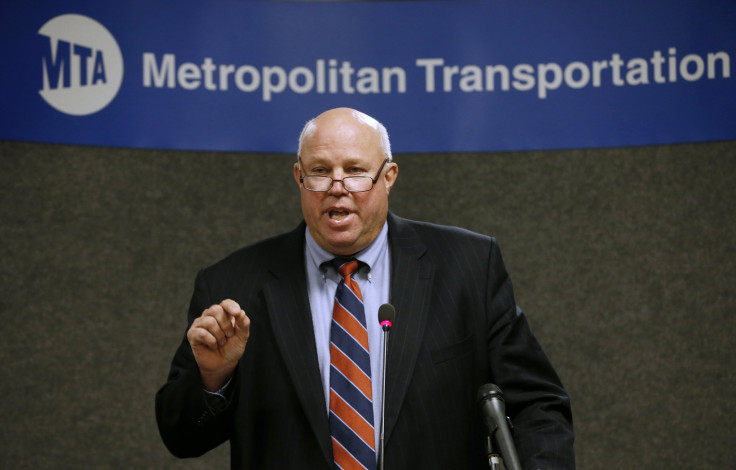MTA Subway Service: Fare Hike Will Increase Costs By Four Percent In 2017 Because Of Construction, Debt

New York's Metropolitan Transit Authority announced Wednesday two proposals to raise fares for commuters using public transportation and the city's bridges and tunnels in March 2017. The measures, which will be discussed in eight public meetings across the city's eight boroughs, could result in an estimated four percent increase in the cost of riding city trains and buses.
The first proposal, entitled "Plan A" would maintain the base price of MetroCards, necessary for using the city's public transportation system, but would reduce the bonus riders receive when purchasing a MetroCard from 11 percent with every $5.50 put on the card to 5 percent. It currently costs commuters $2.75 a ride, but with the bonus, the price drops to $2.48. Under the proposed bonus system, the effective fare would be $2.62 per ride.
"Plan B" would increase the base price of cards, but increase the bonus to 16 percent. The cost of the basic fare would increase to $3 under the second plan. With the new bonus, the effective fare per ride would be $2.59.
Both plans would increase the cost of time-limited, unlimited Metro Cards, which the MTA says accounts for over half of all trips. Under both plans, a 30-day unlimited MetroCard would cost $121, a $4.50 increase from the current $116.50 price. An unlimited seven-day card would cost $32, up from the current price of $31.
Bridge and tunnel tolls would also rise, with cash tolls going up as much as 50 cents. MTA will decide on a plan in January.
“The MTA continues to keep its promise to make sure that fare and toll increases, while necessary to keep our system running, remain as low and possible and that they are done in as equitable a way as possible,” said MTA Chairman and CEO Thomas F. Prendergast. “Fare and toll revenue cover just 51 percent the operating budget, which is why this modest increase is needed to ensure that subway, rail, bus and paratransit services continue operate safely and reliably and to fuel the region’s economic and financial growth,” he added, noting this was the agency's lowest fare hike since 2009.
The transportation agency claims it needs the money to help fund large-scale projects such as a 7 train line extension, a massive $71 million investment in better service and the Second Avenue line, which has been planned for nearly a century. The MTA's debt has been a source of public concern. New York state comptroller Thomas P. DiNapoli has said the figure could reach $41 billion by 2020, according to the New York Times.
The New York City subway system opened in 1904 and is one of the largest subway systems in the world. It has the most stations of any metro system. The New York City subway carries over 5.6 million people per day with two million more taking the bus.
© Copyright IBTimes 2024. All rights reserved.






















